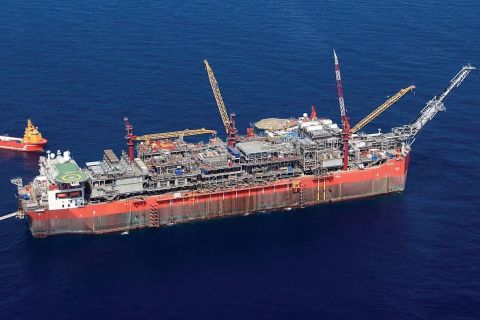Presented by:

Editor's note: This article appears in the E&P newsletter. Subscribe to the E&P newsletter here.
Net-zero carbon emissions isn’t something that can be achieved by one person, one company or one country; it is a goal that everyone has to commit to. Many companies have set a net-zero goal of 2050, but is that a realistic milestone for a problem as massive as carbon emissions?
Schlumberger product champion Vinay Pemmasani recently mentioned that, for the most part, companies and consumers alike are not against working toward transitioning to greener forms of energy and are trying to speed the process along.
“There is no resistance, in fact, to doing the old way and moving to the energy transition,” Pemmasani said during a recent SPE Live Tech Talk webinar. “There’s a lot of interest, and we’ve been talking to a lot of customers in the last six months, and everybody has shown a lot of interest. I think we will, by working together, get to a future where we are able to drill wells with less and less carbon footprint and ultimately even reach the zero carbon footprint well in U.S. land.”
He said it’s going to take a collaborative effort.
“We’ll all have to work together to make this climate target a reality—the drilling contractors, operators, the service companies, communities, all of us," he said. "We’ll have to do it for the community, and then as an industry. It’s very good to see that we are evolving and we are trying to get greener ourselves.”
Crunching the numbers
Pemmasani was joined during the webinar by Paul Wyman, a product manager with Schlumberger, as they assessed the potential timeline for achieving a carbon-neutral well construction process and how to get there.
“Overall, 8% of emissions come from the oil and gas industry between upstream, midstream and downstream,” Pemmasani continued. “A majority of this is from fugitive methane emissions, so there’s various technologies that are there to deal with those.”
To reduce carbon emissions on rigs, operators need to look at ways to reduce the amount of power used, Wyman added. By simply managing their rigs more efficiently by putting the engines in their “optimal load state using the fewest amount of engines,” emissions can decrease by up to 12%.
“That’s the power generation," he said. "And by simply just managing the engines smarter by turning them off or on when we need certain engines or certain amount of power for specific operations, we can save anywhere between 10% and 12% in our emissions that we’re seeing."
Battery storage
Going a step further, Wyman explored the possibilities of emissions saved if operators introduced battery storage technology.
“We’re looking at a wide range of battery materials from lithium ion to nickel zinc to nickel hydrogen,” he said. “Depending on the application, some of those different types of chemistry will be better suited for the environment, but by adding that battery storage, we now give additional flexibility to us managing the engines and managing any of the peak periods of energy consumption on the rig. So by doing that, we can then take 10% to 12% and expand that even further to where we’ve modeled up to 25%, 30% reduction in emissions.”
Economic incentives?
As promising as it all looks, Pemmasani said the real push to net-zero carbon emissions will come from “outside pressure,” meaning some kind of economic incentive. Though a variety of ideas have circulated around the federal government—carbon taxes, carbon credits, etc.—he believes that some strong force separate from the oil and gas industry will dictate how quickly emissions are reduced. However, he encourages the public not to lie around waiting for government taxes to motivate it to change their ways.
“In case they’re not there, then it’s up to us," Pemmasani said. "It’s up to all the parties to work together and see what makes most sense because at some point we know it has to be done."
Even if it’s delayed by a couple of years, he said it’s going to come.
"We will have to be prepared; we can’t just wait for the economic incentive to show up," Pemmasani said.
Smaller goals
To reach 2050, many companies, including Schlumberger, have set milestone goals at 2025 and 2030 to help set the tone for the technological improvements that will follow in the upcoming decades. The smaller goals allow companies see how they’re progressing toward their larger goal, which can encourage them to continue persisting to net zero.
“What I love to see is that technology is evolving in a way that’s really allowing us to expand what our capability is at the rig to be able to reduce emissions,” Wyman said. “We’re going to continue with that to keep moving forward on the technological front and are very excited about introducing these technologies to the market.”
Recommended Reading
Remotely Controlled Well Completion Carried Out at SNEPCo’s Bonga Field
2024-02-27 - Optime Subsea, which supplied the operation’s remotely operated controls system, says its technology reduces equipment from transportation lists and reduces operation time.
Exxon Mobil Guyana Awards Two Contracts for its Whiptail Project
2024-04-16 - Exxon Mobil Guyana awarded Strohm and TechnipFMC with contracts for its Whiptail Project located offshore in Guyana’s Stabroek Block.
E&P Highlights: Jan. 29, 2024
2024-01-29 - Here’s a roundup of the latest E&P headlines, including activity at the Ichthys Field offshore Australia and new contract awards.
Deepwater Roundup 2024: Offshore Africa
2024-04-02 - Offshore Africa, new projects are progressing, with a number of high-reserve offshore developments being planned in countries not typically known for deepwater activity, such as Phase 2 of the Baleine project on the Ivory Coast.
E&P Highlights: Feb. 16, 2024
2024-02-19 - From the mobile offshore production unit arriving at the Nong Yao Field offshore Thailand to approval for the Castorone vessel to resume operations, below is a compilation of the latest headlines in the E&P space.





